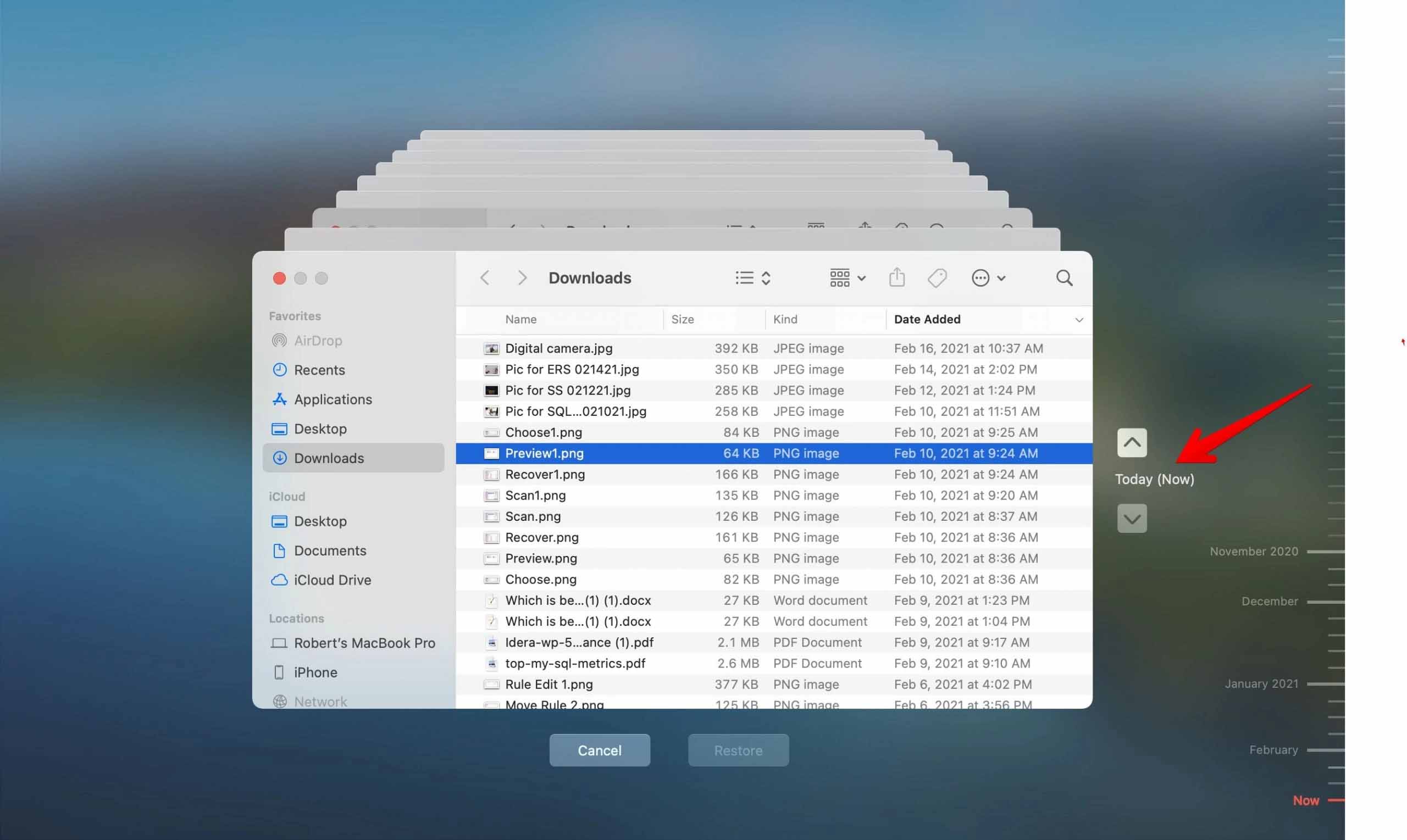
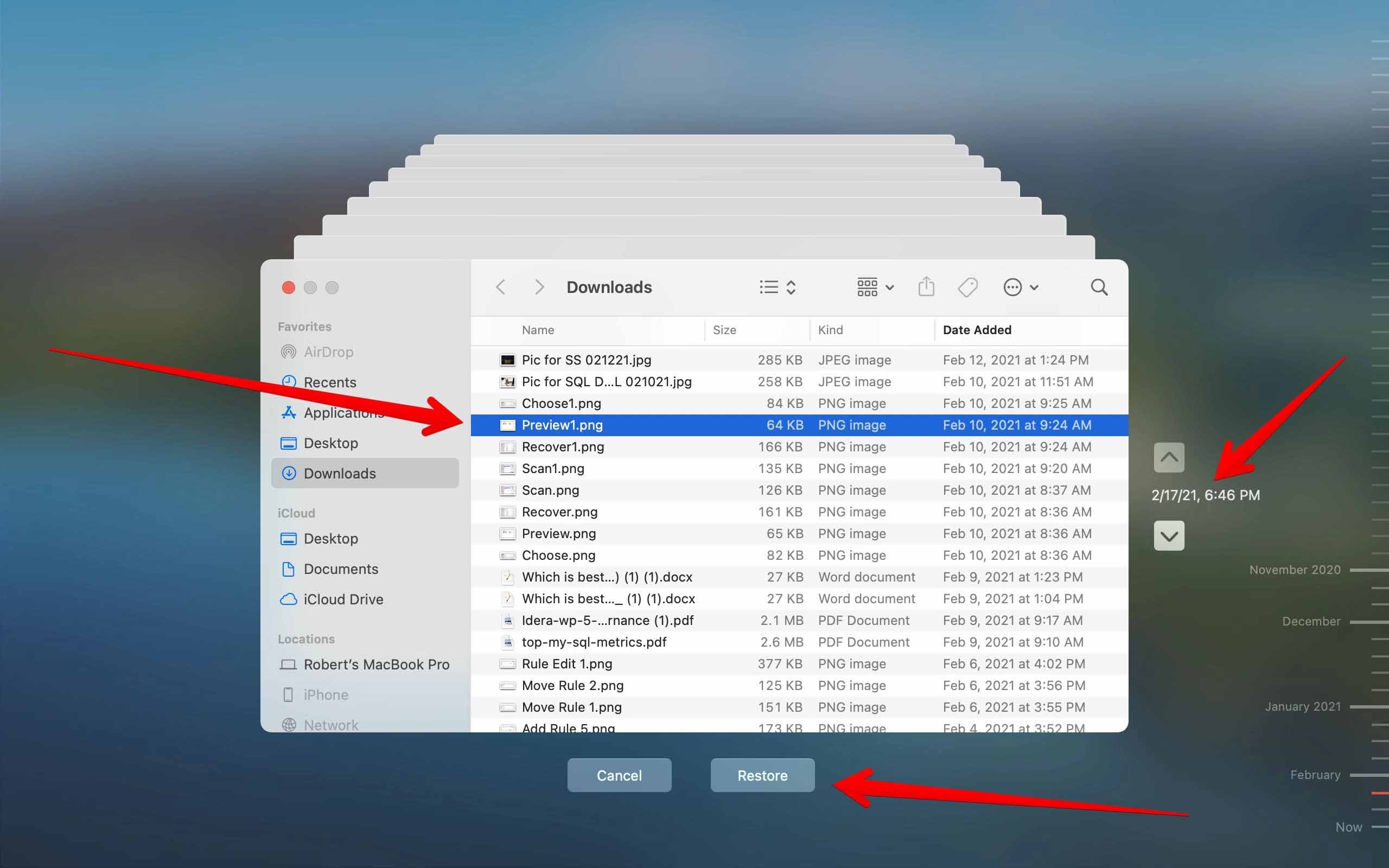

No robots used, our articles are crafted by humans under strict Editorial Guidelines.
Written by Robert Agar Robert Agar Staff Writer • 49 articles Robert Agar, a staff writer at Handy Recovery, specializes in data recovery and data management topics, with a particular affinity for macOS and iOS. He played a key role in the founding of our team and project back in 2017, and is notably responsible for authoring much of the initial content that graced our website. Robert brings over 30 years of experience in data storage, security, compliance, backup, and recovery to the Handy Recovery team. LinkedIn Edited by Alejandro Santos Alejandro Santos Staff Writer • 55 articles Alejandro Santos is a staff writer for Handy Recovery Advisor, covering a broad range of topics with a particular focus on data loss issues on macOS and data management for Apple devices. Alejandro joined the team at the end of 2021, and since then, he has continually been scaling new heights and refining his skills as a technical writer and data specialist. LinkedIn Approved by Andrey Vasilyev Andrey Vasilyev Editor Andrey Vasilyev is an Editorial Advisor for Handy Recovery. Andrey is a software engineer expert with extensive expertise in data recovery, computer forensics, and data litigation. Andrey brings over 12 years of experience in software development, database administration, and hardware repair to the team. LinkedIn
Need personalized advice? Share your issue and get tips from others in our community section. Table of ContentsTime Machine is the native macOS backup and recovery tool. Using it regularly helps protect your information from accidental deletion. Time Machine is designed to create local backups to an external storage device. It offers a simple method by which you can protect the valuable information on your Mac. Apple also offers the ability to create backups through its iCloud cloud service.
In this article, we are going to discuss how to restore your Mac from Time Machine backups. We will also investigate how to use data recovery software to restore lost data when no backup is available.
IMPORTANT: The importance of backing up your data cannot be overstated. If the information stored on your Mac holds any value for you, it needs to be backed up regularly. Apple knows this, and it’s why they include a tool like Time Machine as part of the default macOS installation. You should take advantage of this free tool to protect your data. Get yourself an external hard drive and start regularly backing up your Mac with Time Machine as soon as possible.
Quick Navigation:
I need to recover specific files from Time Machine.
Selectively restore the files from a Time Machine backup using the first procedure presented after this chart.
I need to fully restore macOS from a Time Machine backup.
Restore a complete drive from a Time Machine backup using the second procedure presented after this chart.
I have accidentally deleted an important file but I didn’t have Time Machine active.
You may be able to recover your file quickly from your Mac’s Trash. Just open the Trash folder and drag the items to your desktop or right-click on them and select Put Back to restore them to their original location.
I have accidentally deleted an important file but I didn’t have Time Machine active and have emptied the Trash.
Data recovery software offers the best method of recovering files for which there are no backups and that are not in the Trash. We discuss recovering with software in the third section of the article after the chart.
I need to restore from Time Machine after a clean install.
Use Migration Assistant and Time Machine backups to restore user data.
I need to recover specific data from my old Mac’s Time Machine to my new one.
Connect the old backup and manually move files to your new computer.
I have accidentally deleted an important file but I didn’t have Time Machine active.
First, check your Trash folder. If it’s there, right-click it and click Put Back. If you deleted it from your Trash folder, follow this guide.
I never set up Time Machine.
If you never set up Time Machine and need to recover data, follow this procedure. If you want to learn how to set up Time Machine, follow this guide.
What happens to my Time Machine backups when I enable iCloud?
If iCloud offloaded old files before setting up Time Machine, they won’t get backed up. More info in this section of the article.
I don’t have my Time Machine backup with me.
You can still try browsing your Time Machine backups because some of them are stored locally. Otherwise, use this solution.
There are 3 ways to recover files from a Time Machine backup. (1) Simply open the backup using Finder and copy the files to your Mac. (2) Use Time Machine to restore your backups normally.
And (3) Use 3rd party software if you think your Time Machine drive is compromised (for ex. your drive is corrupted or has connection issues). The first method is self-explanatory – we’ll guide you through 2 and 3 in the sections below.
The following procedure should be used to restore files from a Time Machine backup:


Another way to restore data from a Time Machine backup is by scanning it with data recovery software. This is helpful for bypassing any issues or corruption you may encounter with your Time Machine drive. It also provides more advanced recovery tools than those included in Time Machine and can even recover deleted or formatted Time Machine backups.
For this article, we’ll be using an app called Disk Drill. It’s user-friendly and easy to demonstrate but it’s also super powerful. It supports Time Machine recovery and it’s optimized for all macOS file systems (HFS+, APFS) and common Mac file types. Disk Drill is also Apple Silicon-ready and supports all M1 and M2 computers (as well as older models).
Many data recovery applications are on the market, and we have tested quite a few of them with varying results. We like Disk Drill for Mac as our favorite recovery software tool for macOS. It’s easy to use, has an intuitive interface, and recovers all types of files and formats. You can see other macOS solutions if Disk Drill is not right for you by checking our list of data recovery software for macOS.
To use restore files from a Time Machine backup using Disk Drill:
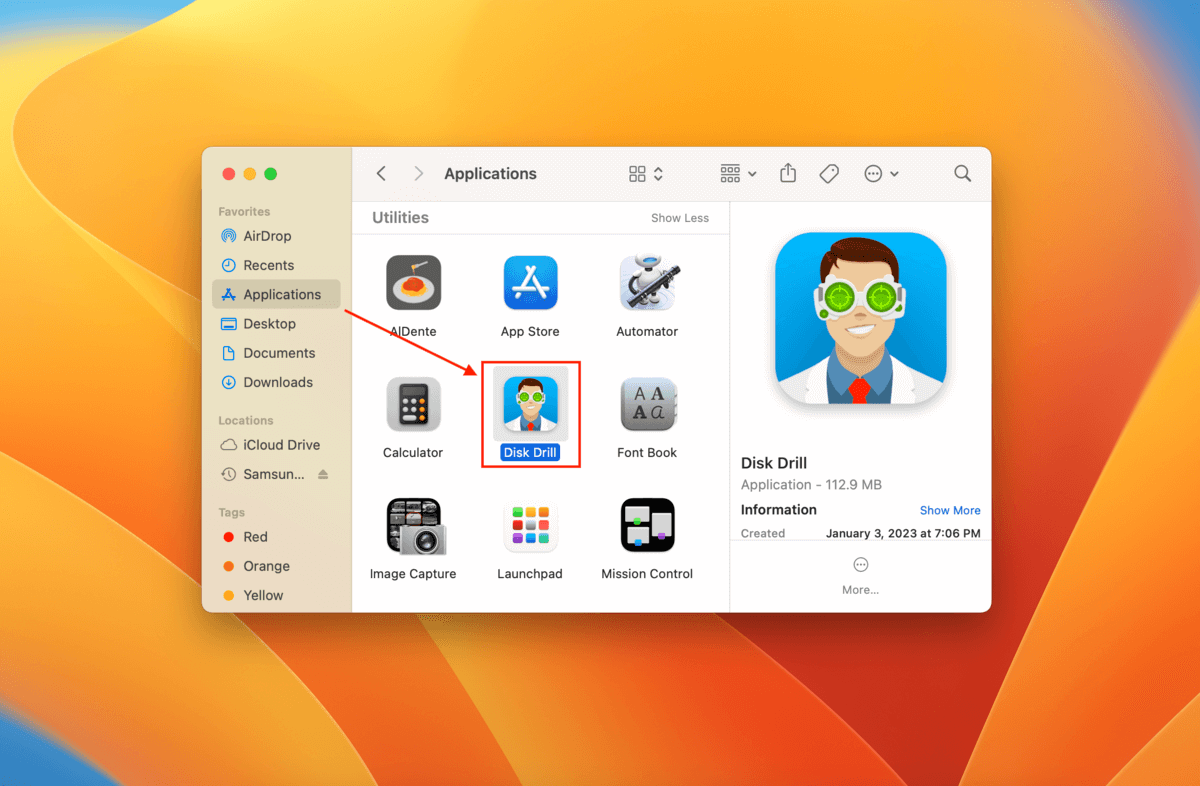
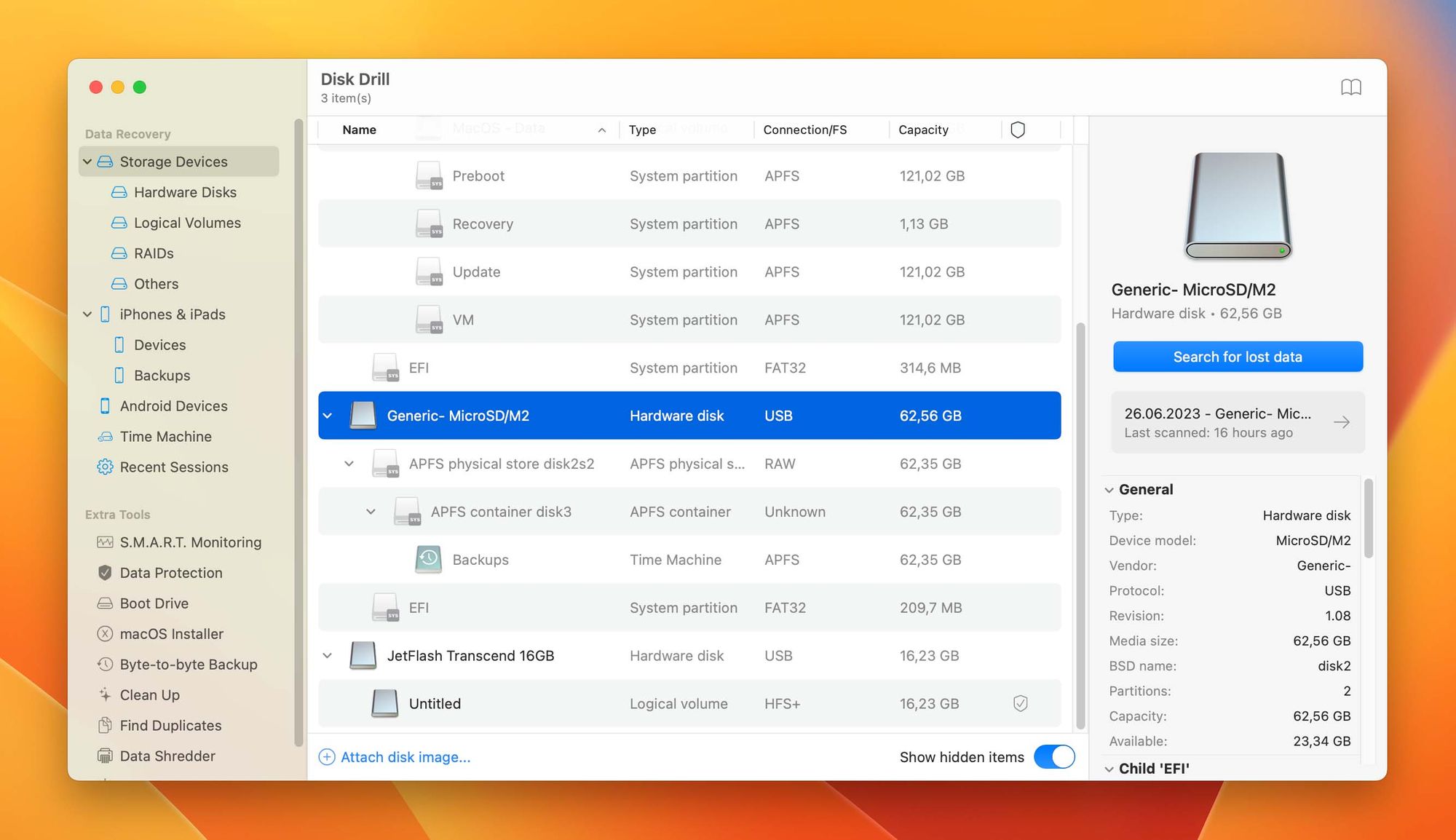
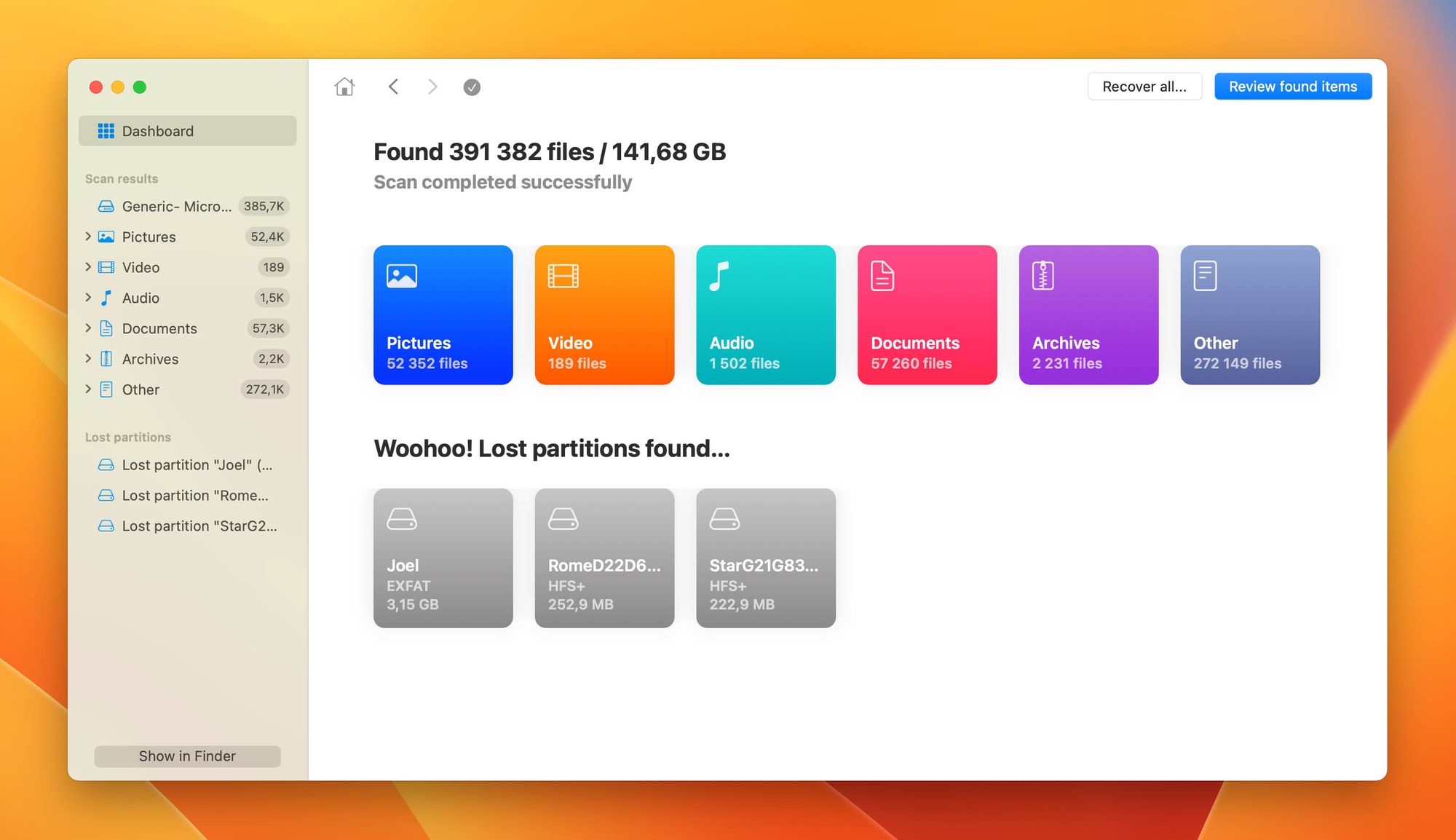
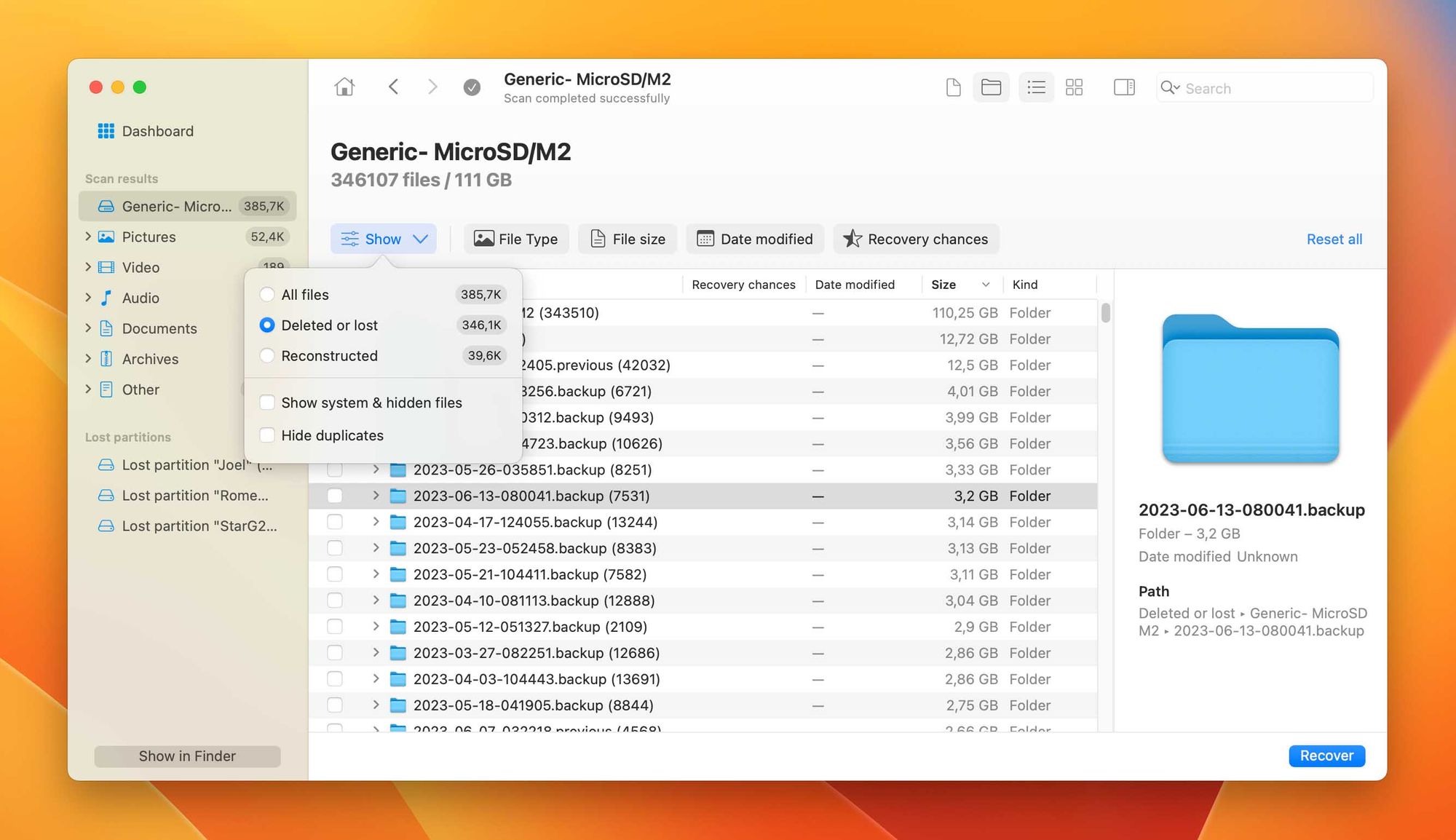

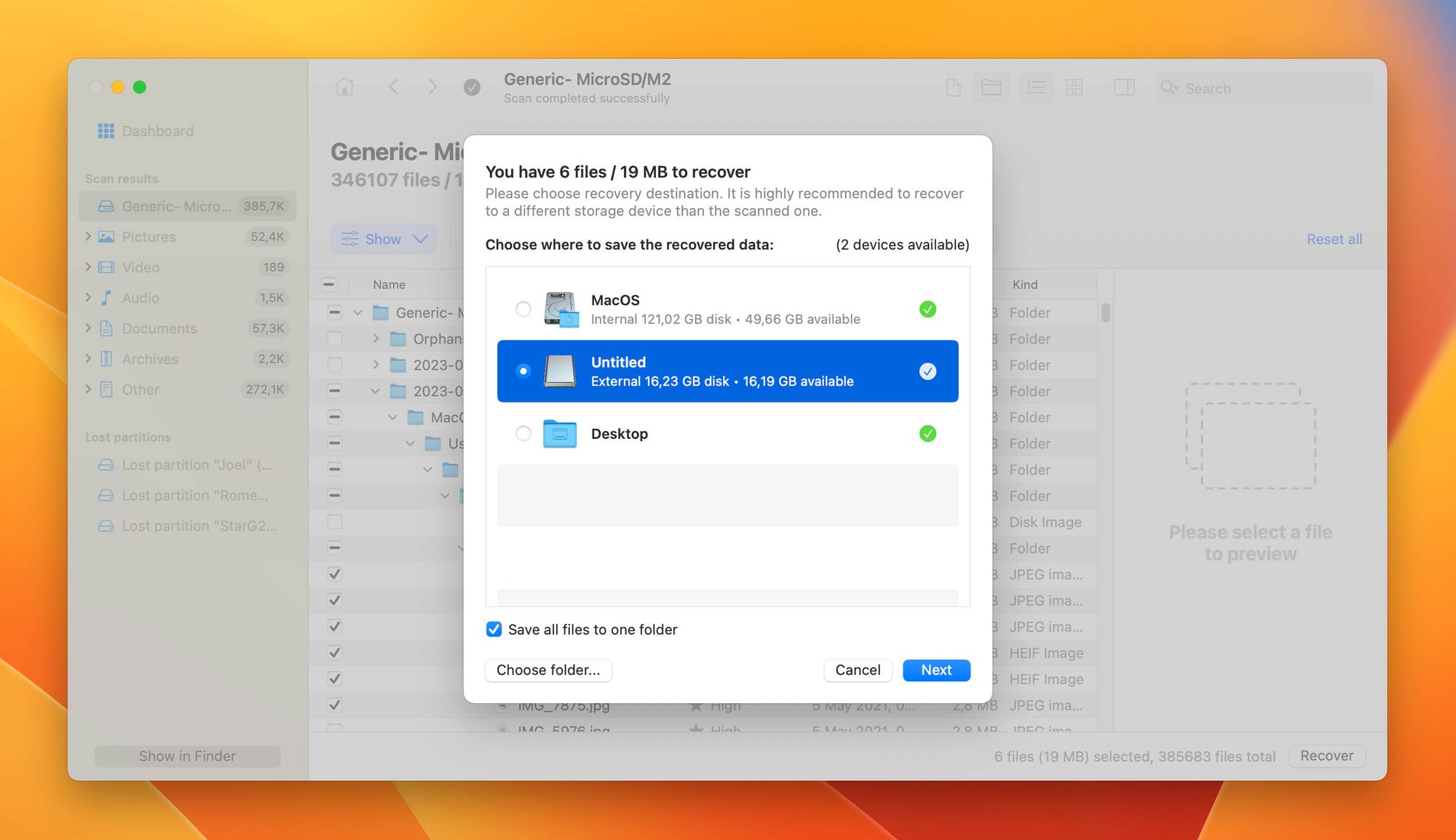
Disk Drill Basic for Mac doesn’t offer free data recovery. However, you can scan and preview as much data as you want – this should help you identify which files are recoverable.
Depending on your needs, you can use 1 of 2 methods you can use to restore your Mac from a Time Machine backup.
The first method, macOS Recovery, is the more comprehensive solution. It allows you to return your Mac to the exact state it was in when the backup was created. Nothing more, nothing less.
The second method, Migration Assistant, allows you to be more selective about what data gets copied and what gets overwritten. It’s the method usually recommended for setting up new Macs.
This method will completely restore your Mac to its previous state, exactly how it was when the backup was created. That means all of the existing files, apps, and other data currently on your Mac will be replaced by the backup data.
This drastic measure is suitable for scenarios where you can’t boot into macOS or you’ve encountered unresolvable conflicts as a result of deleting critical data.
To restore your Mac from a Time Machine backup through macOS Recovery:
Confirm any actions prompted by your Mac and wait for the restore process to finish.
Time Machine is not only useful for recovering groups of lost or deleted files. You can also use it to perform a complete restore of your Mac’s user accounts and data. Time Machine will not recover your operating system.
Before proceeding, you need to have macOS installed on the machine. If you are performing a bare-metal restore, you’ll need to reinstall macOS before recovering data with Time Machine.
Once you have the OS installed, you will be using the Migration Assistant application which will extract data from your Time Machine backups.
Use the following steps to restore your Mac from Time Machine:
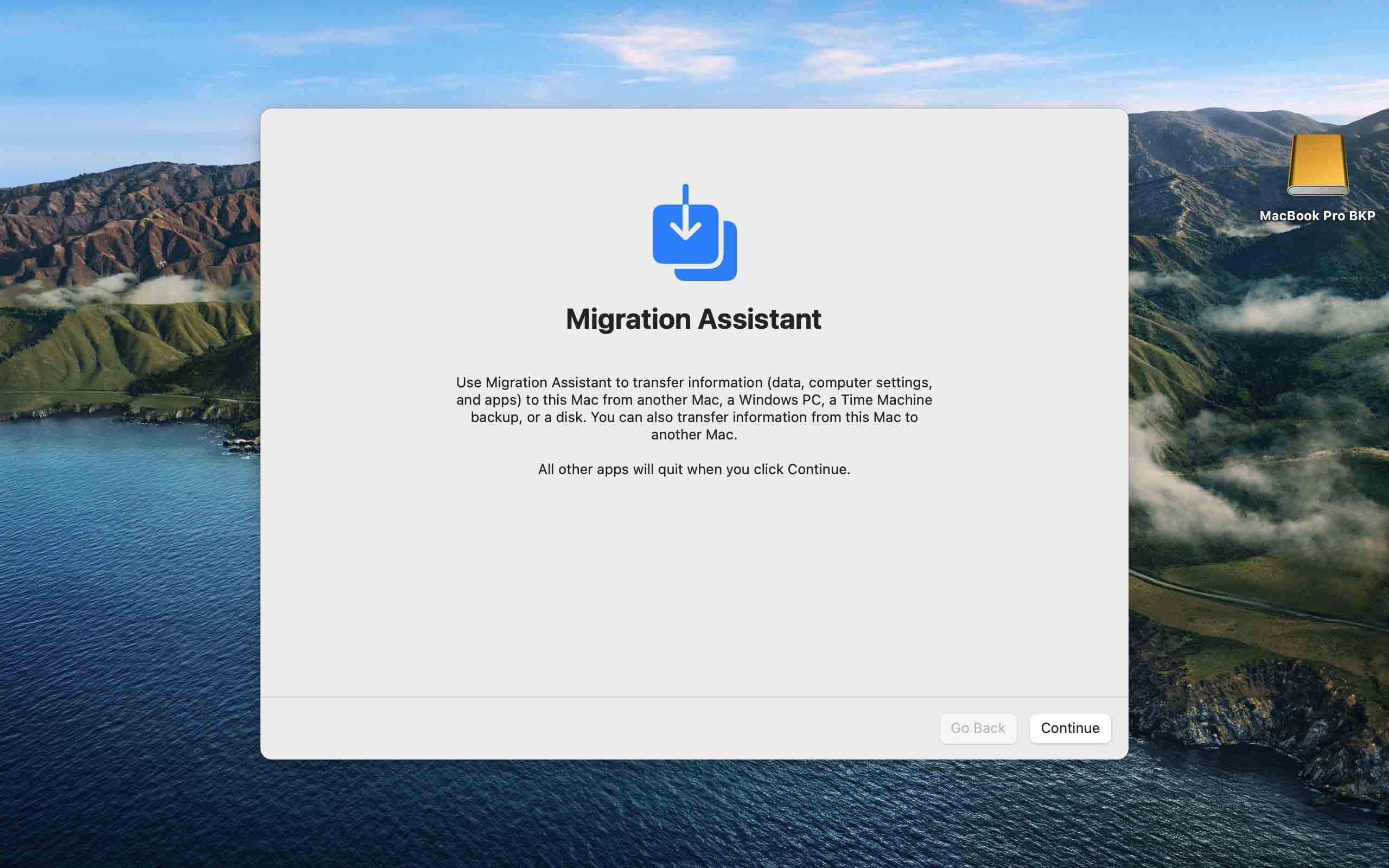
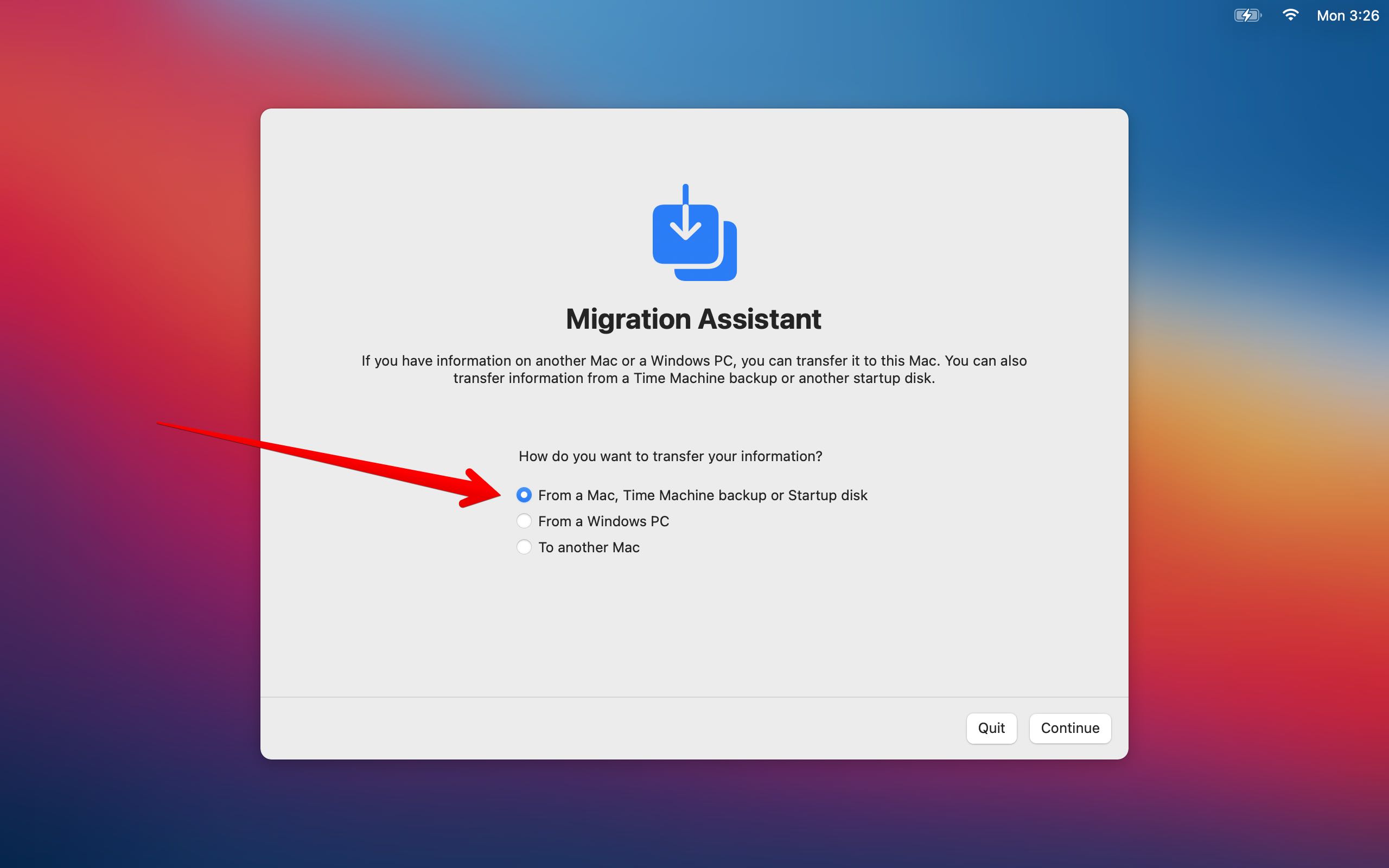
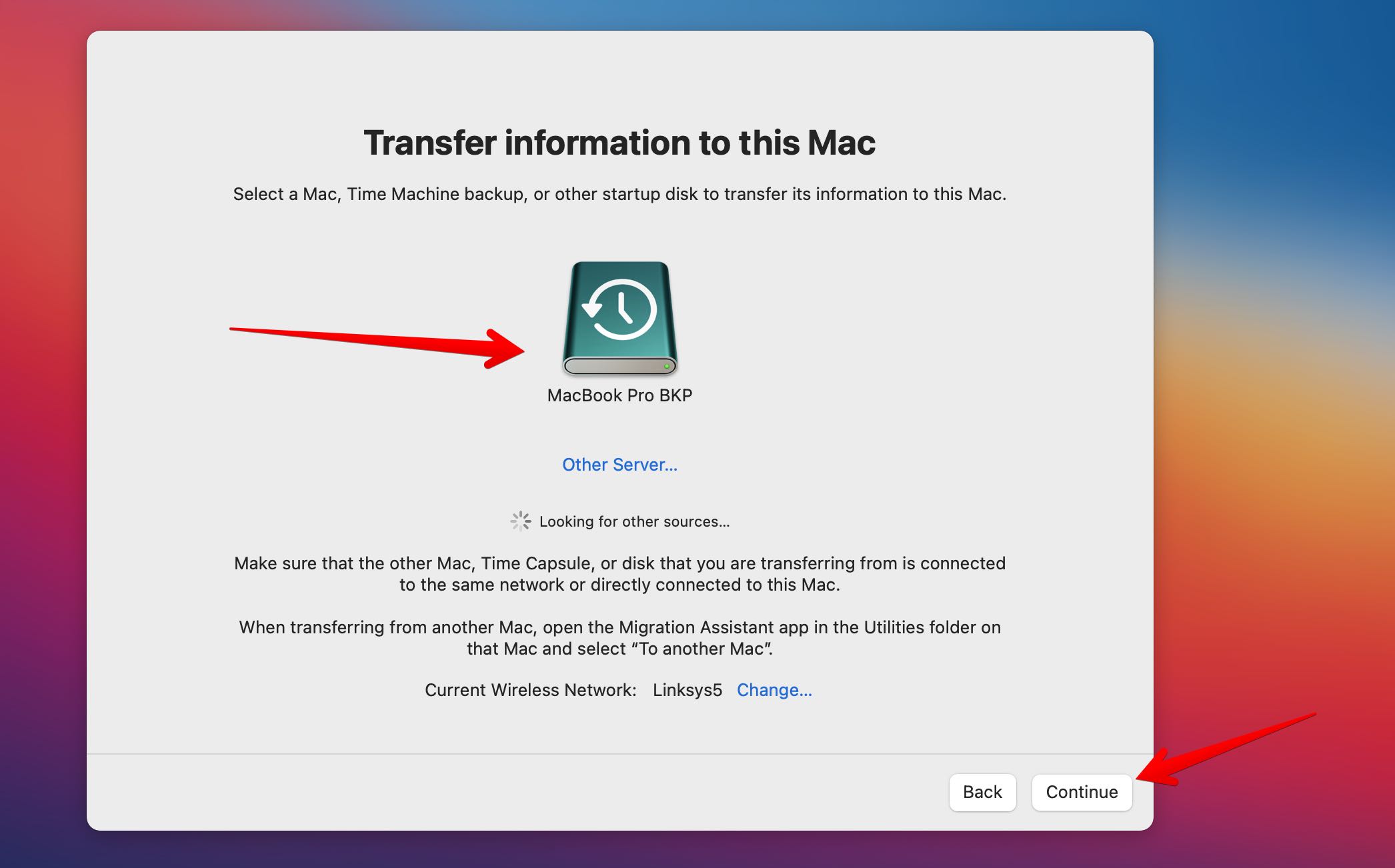
Time Machine is a great tool for recovering deleted files and folders. The catch is that you need to have backed up your data using Time Machine for it to be useful.
Unfortunately, you might not always have made a backup of the files that need to be recovered. They may have only been on your computer for a short time before being deleted.
When deleted files are not available in a backup or your Trash bin, data recovery software may be able to get them back for you. The macOS does not immediately physically remove data from a storage device when it is deleted. The operating system removes the logical links that make the data accessible and marks the storage space as being available for use.
Until the deleted items are overwritten by new information, data recovery software can repair the logical links and restore access. It essentially undeletes the deleted data, making it accessible to the OS and other applications.
IMPORTANT: If you plan on using data recovery software, stop using the affected disk as soon as you suspect data loss. Continued use of the device risks overwriting or corrupting the data you want to restore.
To recover data from your Mac (without Time Machine) using Disk Drill:

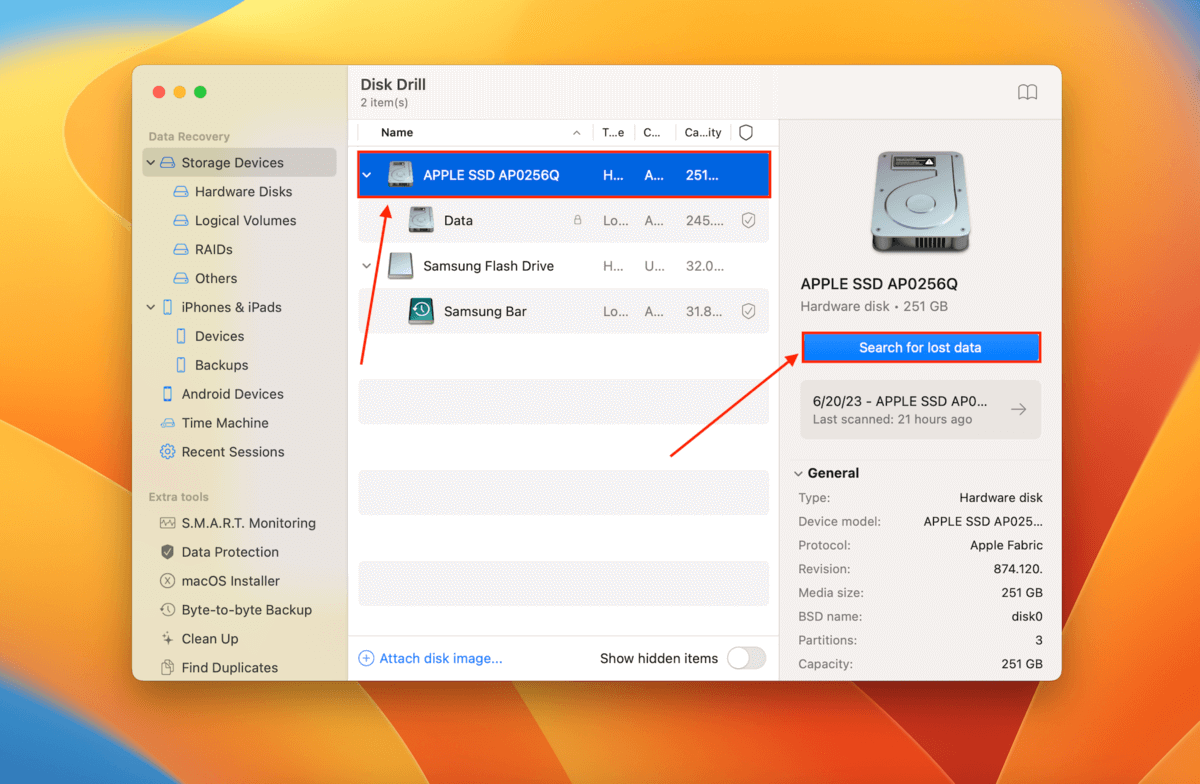
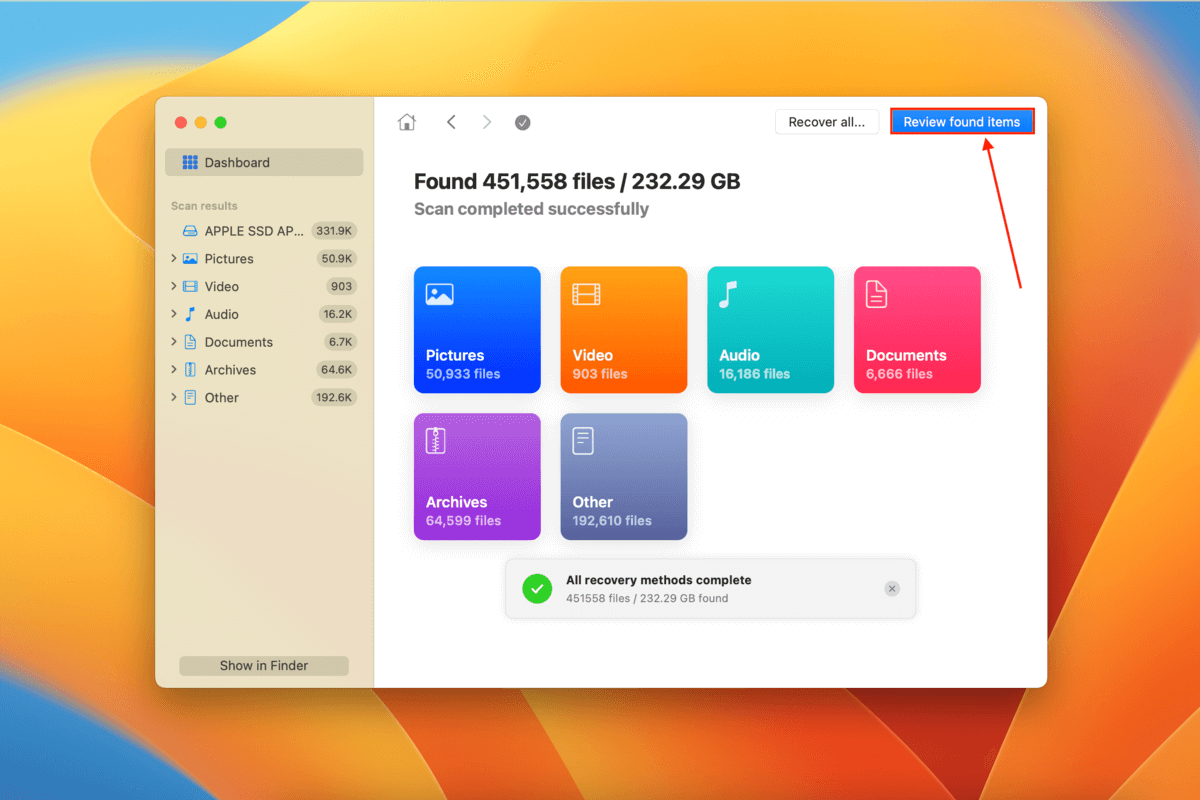
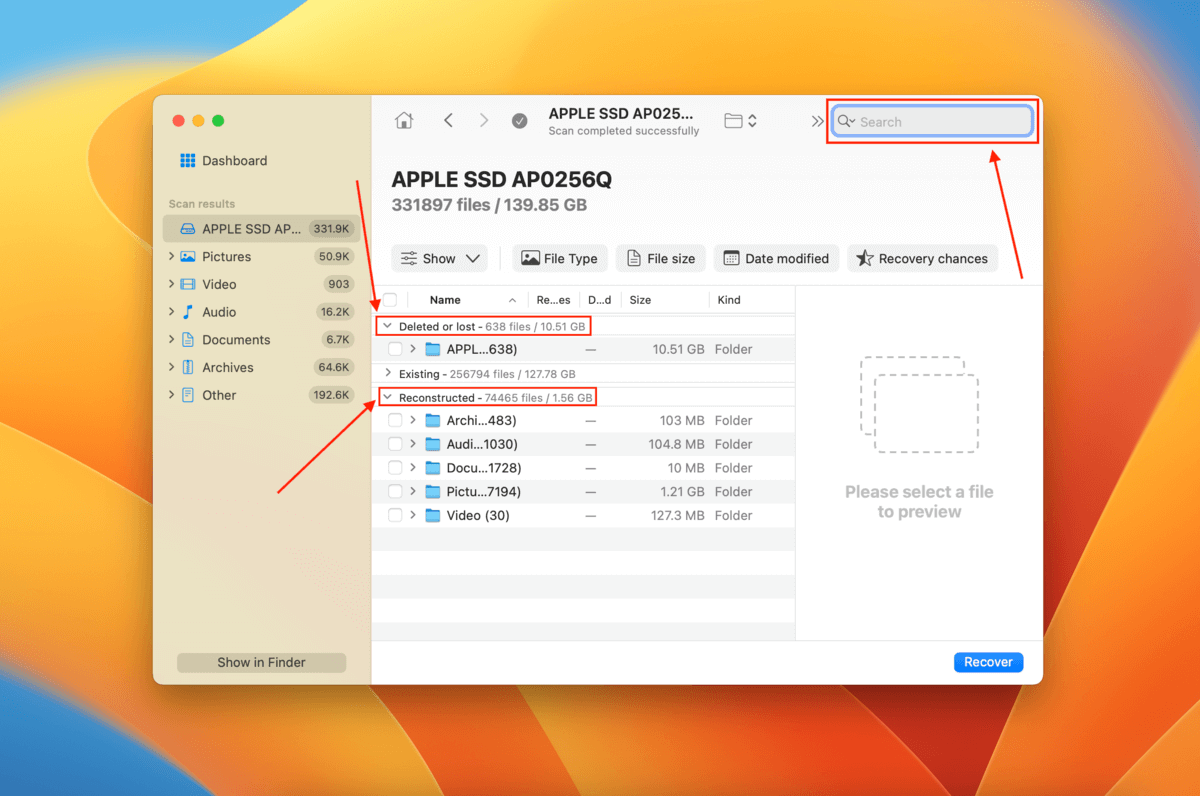
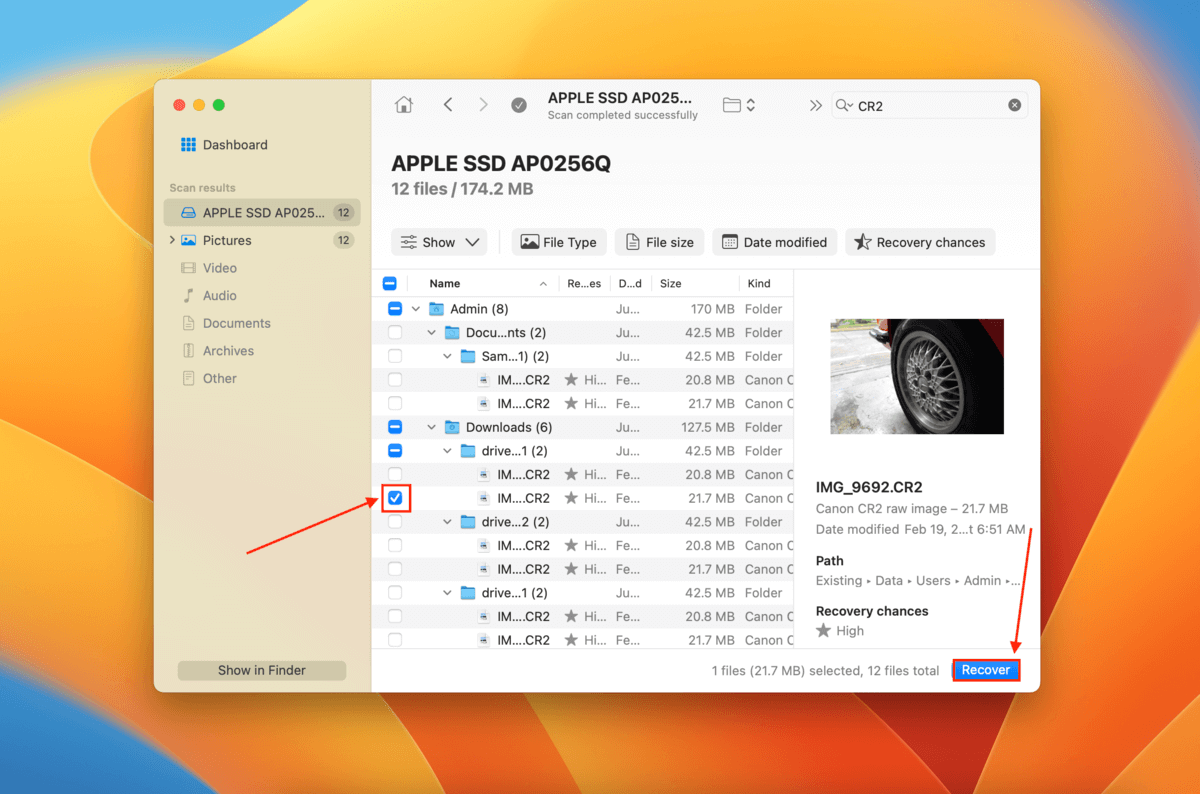
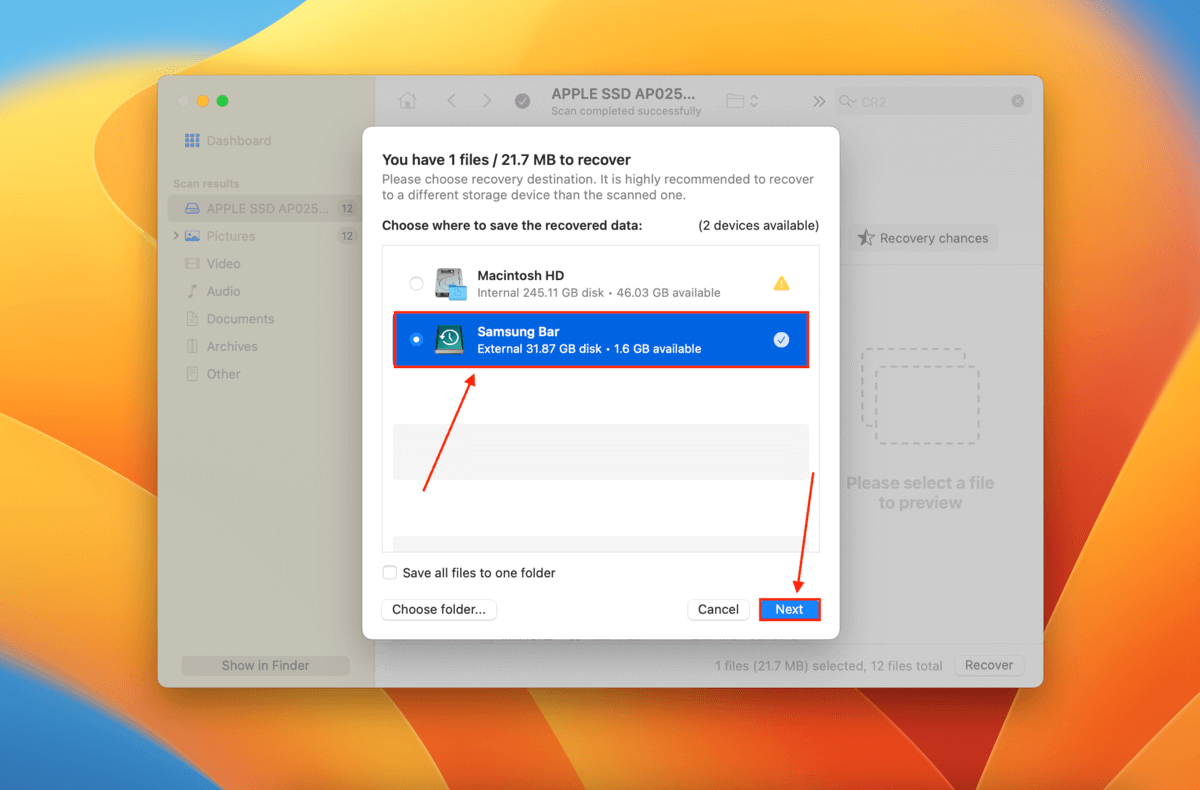
If you’ve never set up Time Machine before, we highly recommend that you do. It works quietly in the background while securing as much data as it can hold. It even stores some backups locally, in case you don’t have access to your Time Machine drive.
All you need is an external storage device (used solely for backups), like an external HDD. The setup is a bit different for older macOS versions, so we’ve prepared mini-guides for Ventura and Monterey or earlier.
While setting up Time Machine, you may be prompted to encrypt your backup. We suggest that you do so with a secure password to protect your data.
To back up your Mac using Time Machine on Ventura:
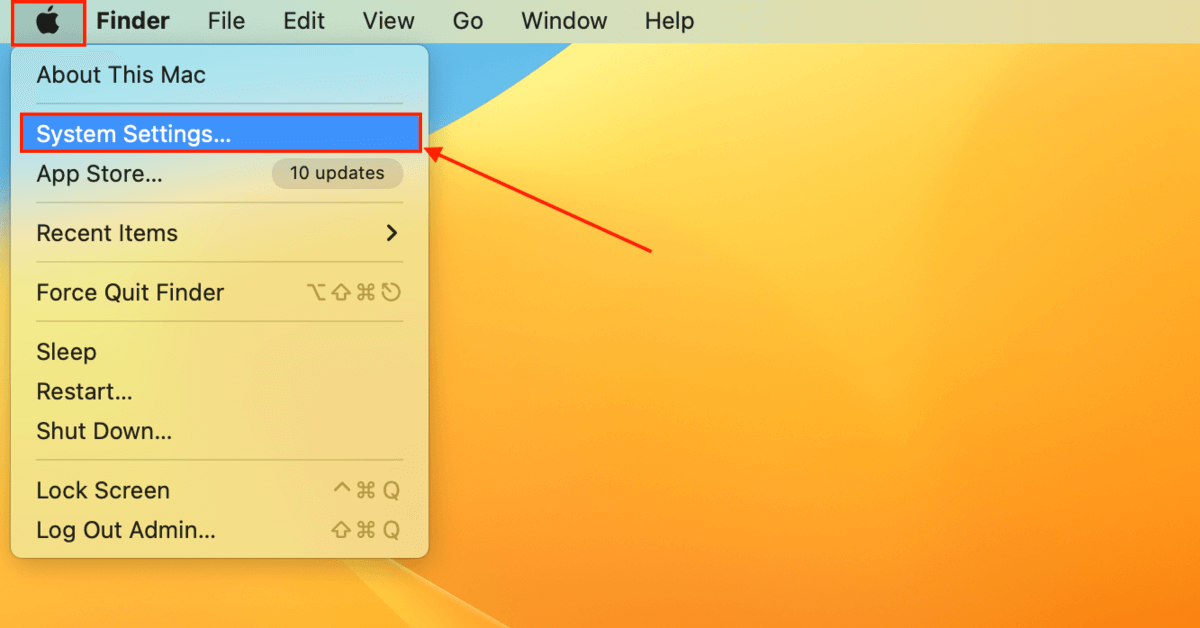
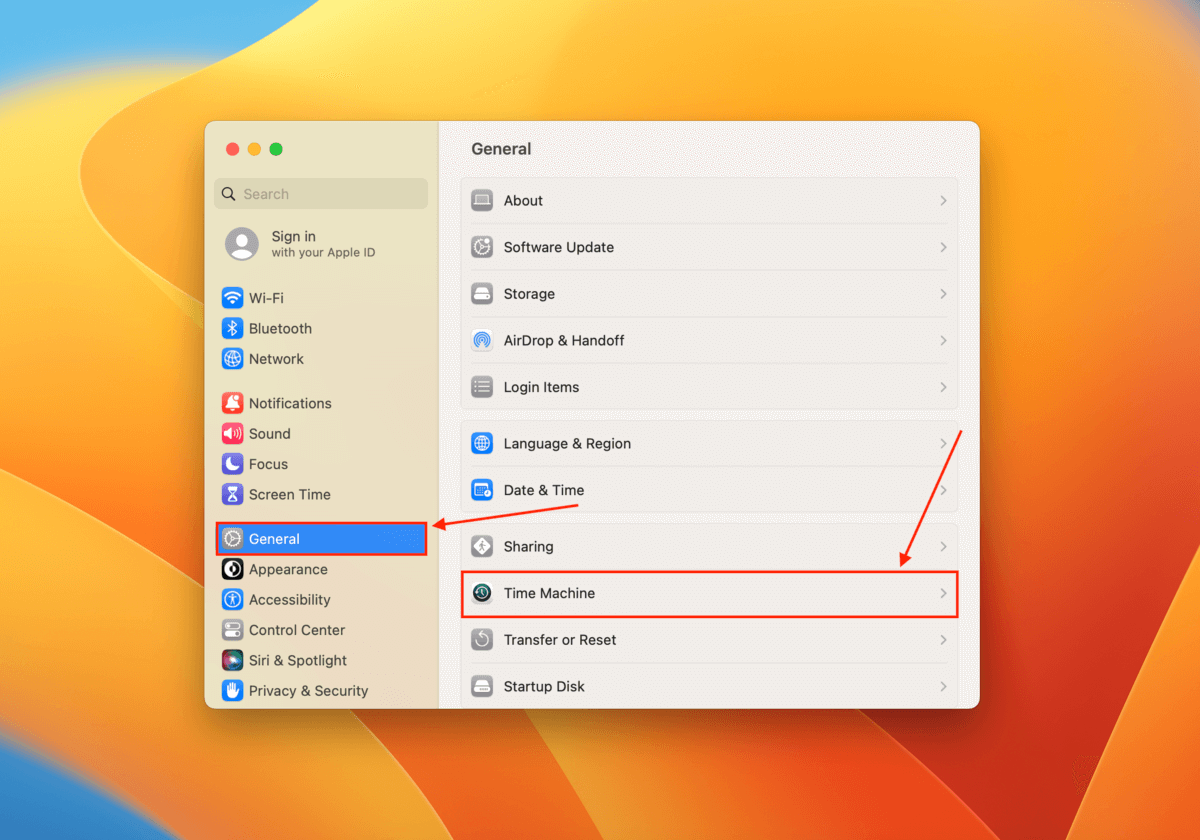
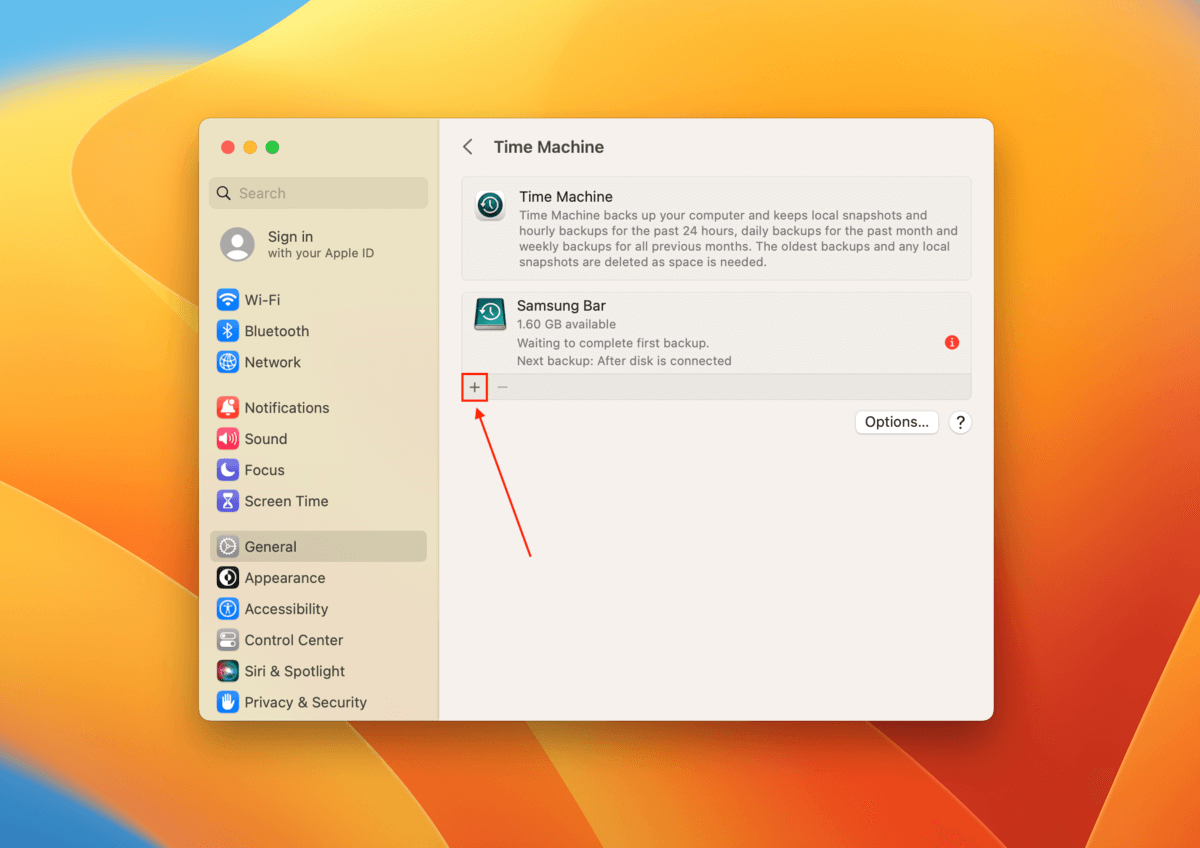
To back up your Mac using Time Machine on Monterey or earlier:
Time Machine will automatically delete the oldest backups in your drive when it hits full capacity to make space for new backups.
iCloud is an Apple feature that automatically keeps your Mac files backed up and synced to a cloud server. That means if you have File A on your Mac with iCloud enabled, you’ll also have a mirror copy of File A in the cloud. If you delete File A from your Mac, it also gets deleted from the cloud.
iCloud is important to understand because it can affect what data Time Machine backs up. This is directly related to the Optimize Mac Storage setting, which we’ll discuss below.
When Optimize Mac Storage is turned ON, files that you haven’t accessed for a long time get offloaded or removed from your local storage, but they will be accessible in iCloud. The purpose of this setting is to free up space on your local drive.
In Finder, offloaded files will look like “blank” files with a cloud icon beside them. You can click this icon to re-download a file from iCloud.
If you enabled Time Machine after a file gets offloaded, that file won’t be included in the backup. However, you should still be able to access it on iCloud.com.
In this situation, you should be safe in case your MacBook gets stolen or destroyed. You can also revert to an old version of a file easily. But if you delete a file that Time Machine was unable to back up (because it was offloaded at the time), you won’t be able to recover it – assuming that you also deleted it from the Trash folder.
When Optimize Mac Storage is turned OFF, all of your files are stored locally. That means that Time Machine will back up 100% of your data. However, that means you’ll need enough storage for all of your files, even the ones you never use.
In this situation, your files will always be completely backed up, but at the cost of having a large local storage disk.
Our suggestion? Use Time Machine and turn Optimize Mac Storage ON. Just make sure to download old files (by clicking the cloud icon beside them) every once in a while and they won’t be offloaded again for some time. Just remember to run the backup again
Follow these steps to recover individual files from a Time Machine to a new Mac.
Use the following steps to access Time Machine files made on one Mac from another Mac.
Without a Time Machine backup, you will not be able to restore your Mac to an earlier date.
Your Time Machine Restore button will be greyed out if you have not selected a valid file or folder for recovery.
To selectively recover files from your old Mac, you can use Time Machine with the Migration Assistant app. Using the data from your Time Machine drive, Migration Assistant will help you choose what data you want to carry over.
The drive you choose for Time Machine depends on your budget, but here are some tips to steer you in the right direction:
Losing data on your Mac is never pleasant, but the problem can often be minimized if you have Time Machine backups available. You should use the tool regularly to backup your valuable information. Your backups might be the only way to recover from a serious data loss scenario. The procedures outlined above will help you restore files from Time Machine backups.
When you can’t restore files from Time Machine, data recovery software may be able to get your data back. For the best results, stop using the device with the lost files until recovery is complete. Good luck restoring your data!
About article Staff Writer Robert AgarThis article was written by Robert Agar, a Staff Writer at Handy Recovery Advisor. It was recently updated by Alejandro Santos. It was also verified for technical accuracy by Andrey Vasilyev, our editorial advisor.
Curious about our content creation process? Take a look at our Editor Guidelines.